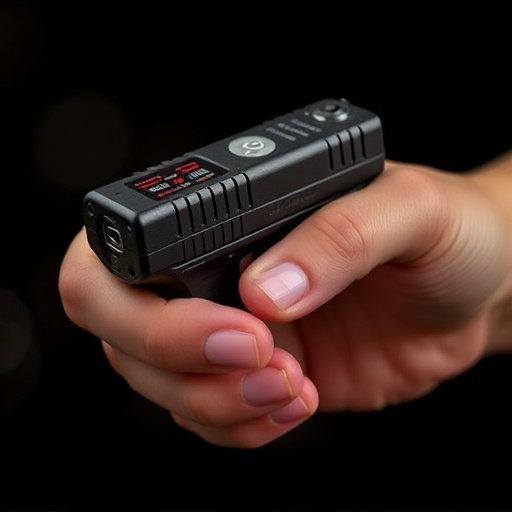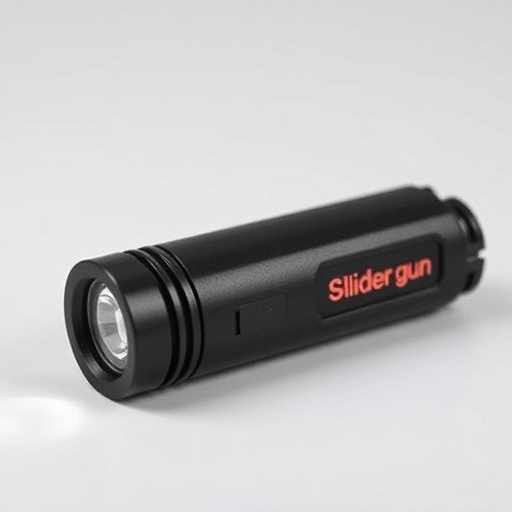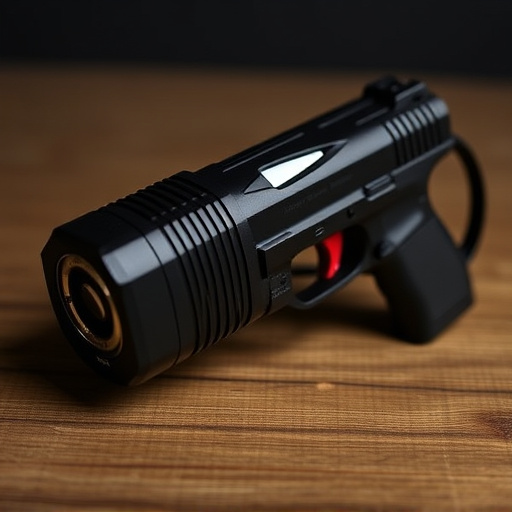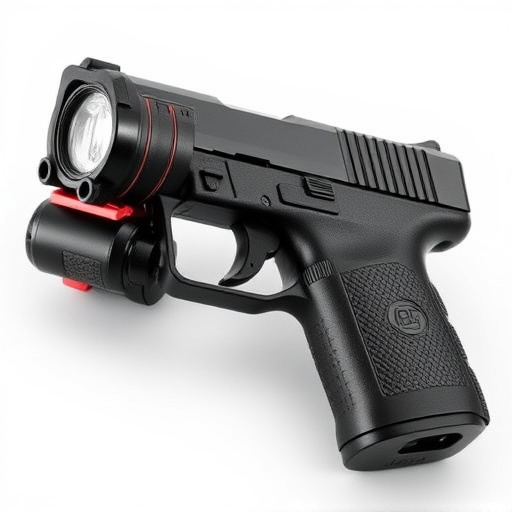Slider stun guns offer advanced non-lethal self-defense through electrical impeding, with key components including an electrode assembly and adjustable current intensity via a sliding mechanism. Effectiveness depends on electrode spacing, with optimal performance between 1.5 to 2.5 inches (3.8 to 6.35 cm), validated by rigorous research. Safety precautions are paramount, emphasizing correct placement, training, maintenance, local laws, and situational awareness to balance effectiveness and safety.
Explore the intricate world of slider stun guns and their crucial component: electrode spacing. This article delves into the science behind these powerful personal defense devices, revealing how precise electrode placement impacts effectiveness. From understanding the unique design of slider stun guns to exploring rigorous testing and safety protocols, you’ll gain valuable insights into optimizing both performance and user safety. Uncover the optimal electrode spacing distances that make these tools more than just a device—a game-changer in personal security.
- Understanding Slider Stun Gun Design and Its Key Components
- The Role of Electrode Spacing in Stun Gun Effectiveness
- Testing and Research on Optimal Electrode Spacing Distances
- Safety Considerations and Best Practices for Stun Gun Use
Understanding Slider Stun Gun Design and Its Key Components

Slider stun guns are a specialized type of non-lethal self-defense weapon designed to immobilize targets through electrical impeding rather than physical harm. Their unique design incorporates a sliding mechanism that adjusts the distance between electrodes, allowing for precise control over the amount of current delivered. This feature is crucial as it ensures users can target specific muscle groups without causing permanent damage.
The key components of a slider stun gun include the electrode assembly, which houses the positive and negative terminals, and the internal circuitry that controls the flow of electricity. The sliding mechanism allows users to adjust the spacing between these electrodes, dictating the current intensity. This adaptability is a game-changer in tactical situations, enabling operators to adapt to various scenarios and subjects while minimizing collateral damage.
The Role of Electrode Spacing in Stun Gun Effectiveness

The effectiveness of a stun gun, particularly a slider stun gun, is significantly influenced by the spacing between its electrodes. Electrode placement plays a crucial role in delivering an efficient and potent electric shock to immobilize a target. With proper spacing, the current can flow optimally through the body, disrupting muscle control and causing temporary paralysis.
In the design of slider stun guns, the distance between the electrodes is carefully considered. A closer electrode spacing allows for a more concentrated charge, which can be effective at shorter ranges. However, larger gaps may enable a stronger shock but require the user to make contact for a longer duration. Optimizing this parameter ensures that the stun gun performs effectively in various scenarios, providing users with control and confidence when facing potentially dangerous situations.
Testing and Research on Optimal Electrode Spacing Distances

In the realm of self-defense tools, the slider stun gun stands out as a game-changer. Its effectiveness is closely tied to the precise electrode spacing within the device. Testing and research have delved into this critical aspect, revealing optimal distances for maximum impact. Studies show that the ideal electrode spacing for a slider stun gun typically ranges between 1.5 to 2.5 inches (3.8 to 6.35 cm). This range ensures a strong electrical field, allowing for swift incapacitation of an assailant.
Researchers have conducted numerous experiments to validate these findings. Controlled trials with volunteer participants have consistently demonstrated that electrode spacing within this specified range delivers the most potent shock, while also minimizing the risk of user injury. Such research underscores the importance of proper design and construction in stun guns, emphasizing how subtle variations in electrode placement can significantly affect both performance and safety.
Safety Considerations and Best Practices for Stun Gun Use

When using a slider stun gun, safety should always be the top priority. It’s crucial to understand that while stun guns are designed to immobilize targets, they do not eliminate the risk of injury or death. Users must adhere to best practices to ensure safe and effective deployment, including maintaining proper electrode spacing. For a slider stun gun, this typically means keeping the electrodes in contact with the target’s body for several seconds to deliver a powerful shock. Misalignment can result in reduced effectiveness or even a failed discharge, potentially leaving you or your target vulnerable.
Best practices also include training and familiarization with the device. Users should practice proper technique, including targeting specific pressure points and understanding the stun gun’s range and power settings. Regular maintenance and inspections are essential to ensure the stun gun’s functionality and safety. Always follow local laws and regulations regarding stun gun use and be aware of your surroundings to avoid unintended discharges or misuse that could lead to harm or legal consequences.
The slider stun gun, with its unique design and strategic components, offers a powerful personal defense tool. Understanding the role of electrode spacing is key to unlocking its effectiveness. Through rigorous testing and research, optimal distances have been determined to maximize impact while ensuring user safety. By adhering to best practices and considering safety measures, individuals can leverage the slider stun gun’s potential as a reliable means of self-defense.
